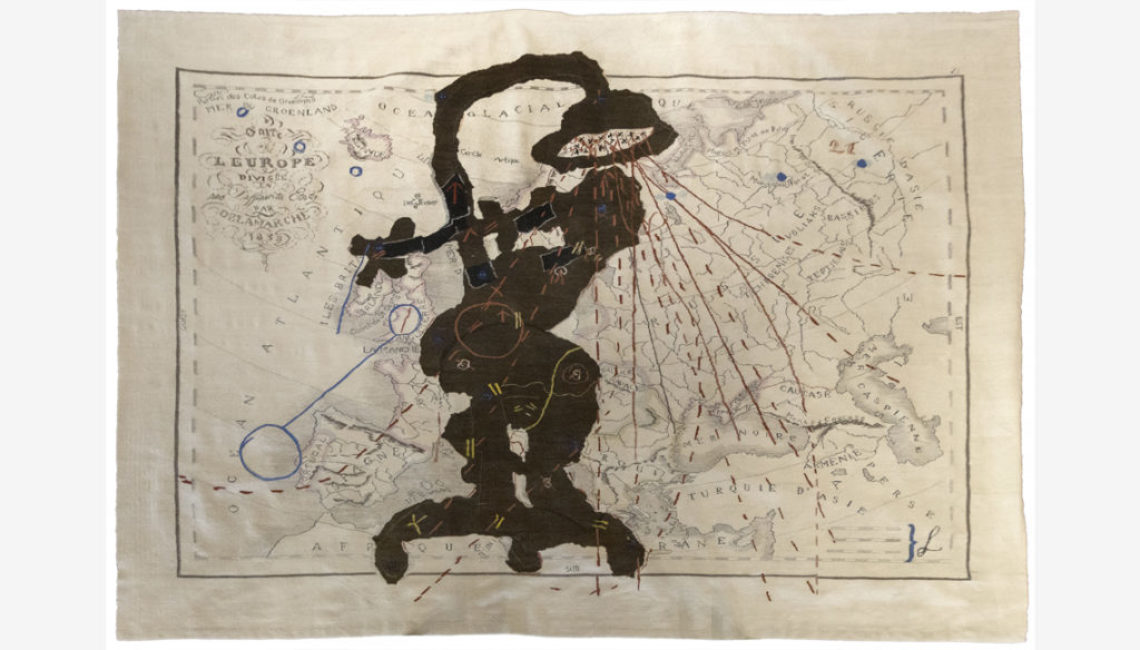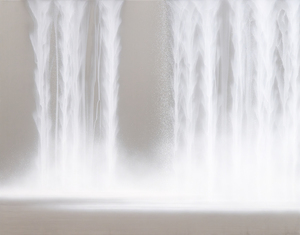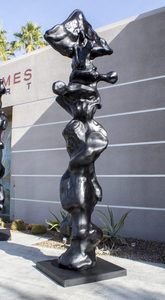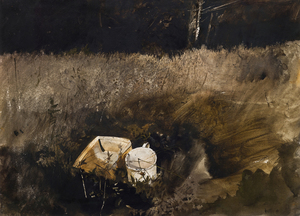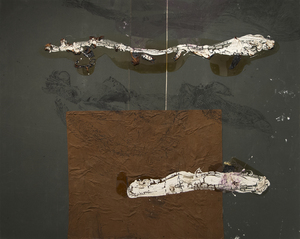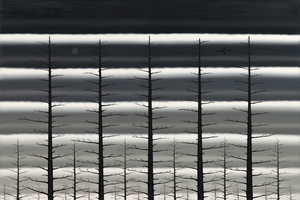WILLIAM KENTRIDGE (b.1955)
_41396.jpg)
_41396_detail1.jpg)
_41396_detail2.jpg)
_41396_detail3.jpg)
_41396_detail4.jpg)
_41396_detail5.jpg)
_41396_detail6.jpg)
_41396_detail7.jpg)
_41396_detail8.jpg)
_41396_detail9.jpg)
Provenance
Galleria Lia Rumma, Milan, ItalyPrivate Collection, acquired from the above
Christie's (New York, NY), March 6, 2014: "First Open Post War and Contemporary Art Sale," Sale 2824, Lot 105
Private Collection, acquired from the above
Exhibition
Centro de arte contemporáneo de Málaga (Málaga, Spain), “William Kentridge: Won't You Join The Dance?,” February 14 - May 13, 2012; another example exhibitedLiterature
Basualdo, Carlos “William Kentridge: Tapestries,” (New Haven, CT: Yale University Press, 2008)185,000
History
William Kentridge may be the most versatile artist since Picasso. Born in Johannesburg in 1955 to a celebrated anti-apartheid lawyer and an active defender of human rights, he has tackled themes of anguish and inequity in the wake of apartheid and embraced a wide range of media, including drawing, printmaking, animation, film, murals, sculpture, theatre, and opera. His love of puppetry, shadow play, and projections inspired torn paper silhouettes arranged as collages, some of which by 2001 would serve as weaving cartoons for tapestries. Kara Walker, who also uses silhouettes to create tapestries to further animate her racially charged art, explained that silhouettes ‘say a lot with very little information and that, that’s also what the stereotype does.’
If we bear in mind the enormous importance Kentridge places on drawing, it is not surprising that tapestry would be a natural evolution within his work. Woven in close consultation with Kentridge by the Stephens Tapestry Studio in Johannesburg, the finished pieces, are fabricated from locally spun mohair colored with hand-picked dyes. Each work is woven from the bottom up on a vertical loom using the French Gobelin high-warp technique; a highly effective woven process that introduces ‘a degree of movement absent from more traditional tapestries.’ As New York Times critic Roberta Smith pointed out “translating the collages into tapestries is a process of amplification, expansion, and refinement…In awaking and giving life to Mr. Kentridge’s images, the weaving process could almost be said to animate the collages a sense of visual energy bordering on motion.” (R. Smith, “Shadowy Nomads, Writ in Warp and Woof,” New York Times, December 31, 2007).
Carte L’Europe (Shower Woman) was woven in an edition of five as part of the Porter Series of tapestries. It was exhibited at the Philadelphia Museum of Art from December 2007 to April 2008, William Kentridge: Tapestries. While the silhouetted figure of a showering woman is unaware of her voyeuristic audience, it is her superimposed deployment upon the imposing formality of a nineteenth-century European map that suggests Kentridge’s political tone and intentions. Sometimes context is everything.











